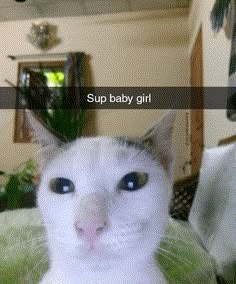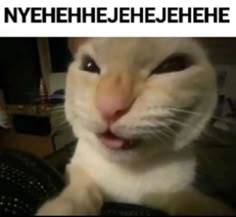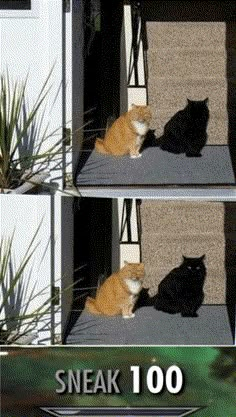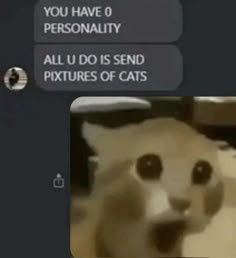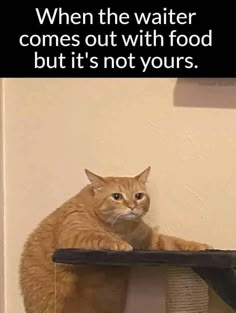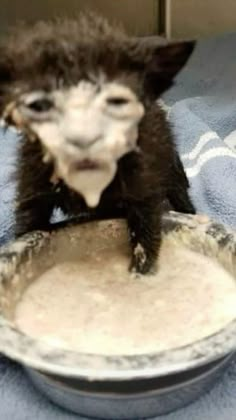Decoding the Feline Frenzy: An Exploration of Funny Cat Memes
Summary
This blog post delves into the world of funny cat memes, exploring their history, psychology, humor, evolution, and cultural impact. It examines why cats are so meme-able, what makes a cat meme funny, and how these seemingly simple images and videos have become a significant part of internet culture.
The Purrfect World of Funny Cat Memes: A Deep Dive
Cat memes. They're everywhere. But where did they come from, why are they so popular, and what makes a cat meme funny? Let's explore the fascinating world of funny cat memes.
What Exactly Is a Funny Cat Meme?
At its core, a funny cat meme is an image or video featuring a cat, often overlaid with text, designed to be humorous and shareable. The humor can stem from a variety of sources: the cat's facial expression, its posture, a relatable situation, or simply the absurdity of attributing human-like thoughts and feelings to a feline. The key ingredient is relatability and shareability; a meme only truly becomes a meme when it's widely circulated and adapted.
A Brief History: From Loaf Cats to Grumpy Cat
The internet's obsession with cats predates the term "meme." Early examples include simple images of cats doing cat things, often shared on forums and email chains. However, the rise of social media platforms like 4chan, Reddit, and Tumblr in the mid-2000s provided the perfect breeding ground for cat memes to flourish. Sites like I Can Has Cheezburger? (ICHCB) popularized image macros featuring cats with intentionally misspelled captions, known as "lolspeak." Think of the classic "I can has cheezburger?" cat – a foundational text in the meme history books.
From there, cat memes evolved. Specific cats, like Grumpy Cat (Tardar Sauce), became celebrities in their own right, their unique appearances lending themselves to countless variations. Grumpy Cat's perpetually displeased expression, for example, resonated with a generation experiencing online cynicism and existential dread, becoming a symbol of relatable grumpiness. Other popular cat memes include Nyan Cat (a Pop-Tart cat flying through space leaving a rainbow trail), Ceiling Cat (the feline equivalent of Big Brother, watching you from above), and countless variations on cats being derpy, clumsy, or simply adorable.
Why Cats? The Psychology of Feline Fascination
Why cats, though? What is it about these furry creatures that makes them so meme-able? Several factors contribute to their online popularity:
- Relatability: Despite their often aloof demeanor, cats exhibit behaviors that humans can relate to. They sleep a lot, they can be demanding, and they have moments of pure, unadulterated derpiness. These relatable qualities make them easy to anthropomorphize and project our own emotions onto.
- Aesthetics: Cats are, let's face it, often quite cute. Their soft fur, expressive eyes, and playful antics make them visually appealing. This inherent cuteness translates well to images and videos, making them instantly shareable.
- Accessibility: Cats are ubiquitous. Many people own cats, and even those who don't likely encounter them in their neighborhoods or online. This widespread exposure makes cat memes easily accessible and understandable to a broad audience.
- The Absurdity Factor: Cats often do things that are just plain weird. Whether it's squeezing into tiny boxes, chasing laser pointers with manic intensity, or staring blankly at walls, their quirky behavior provides endless fodder for humor.
How Funny Cat Memes Work: The Anatomy of a Laugh
So, what makes a cat meme funny? It's a complex equation, but here are some key elements:
- Unexpected Juxtaposition: Often, the humor comes from placing a cat in an unexpected situation or pairing its image with a caption that contrasts sharply with its behavior. For example, a picture of a cat looking regal might be captioned with something self-deprecating or mundane.
- Relatable Situations: Memes that depict cats experiencing situations that humans can relate to – like being stressed at work, struggling with technology, or feeling awkward in social situations – tend to be particularly popular.
- Exaggeration and Hyperbole: Cat memes often exaggerate the cat's emotions or behaviors for comedic effect. A slightly annoyed cat might be portrayed as being utterly furious, or a mildly curious cat might be depicted as being deeply philosophical.
- Wordplay and Puns: Cat-related puns and wordplay are a staple of the genre. Think of phrases like "purrfect," "cat-titude," or "hiss-terical."
The Evolution of Cat Memes: From Static Images to Dynamic Content
Cat memes aren't static; they've evolved alongside the internet itself. While image macros remain popular, video memes, GIFs, and even TikToks featuring cats are now commonplace. The rise of short-form video platforms has allowed for more dynamic and creative cat memes, often incorporating sound effects, music, and editing techniques.
Furthermore, cat memes have become increasingly self-aware and meta. Memes that reference other memes, or that comment on the nature of memes themselves, are becoming more prevalent. This reflects a growing sophistication and self-awareness within internet culture.
The Impact of Funny Cat Memes: More Than Just a Laugh
While they may seem frivolous, funny cat memes have a significant impact on internet culture and even broader society. They provide a shared language and a sense of community, allowing people to connect with each other through humor. They can also be used to raise awareness about important issues, promote social change, or simply provide a much-needed dose of levity in a stressful world.
In conclusion, funny cat memes are more than just silly pictures of cats. They're a reflection of our shared human experience, a testament to the power of humor, and a constantly evolving form of online communication. So, the next time you see a funny cat meme, take a moment to appreciate its cultural significance – and maybe share it with a friend.


